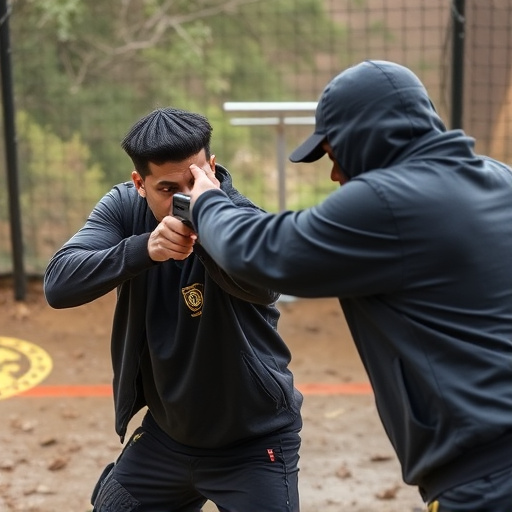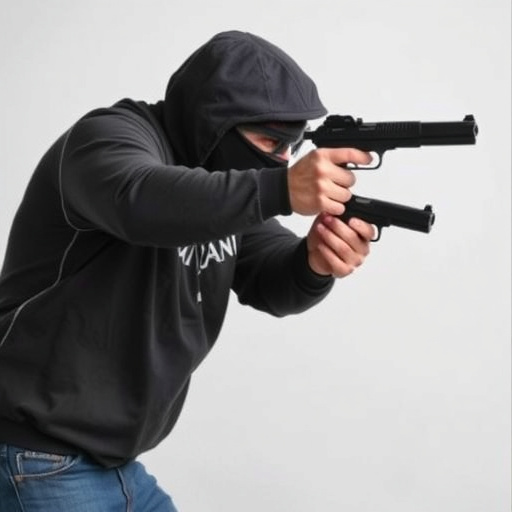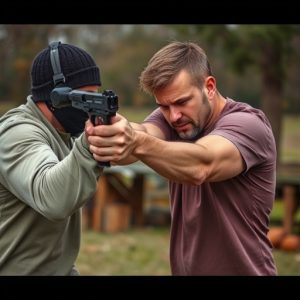Unveiling Concealed Stun Gun Detection: Legal Balancing Act & Privacy Concerns
The global legal status of stun guns (electronic control devices) varies, balancing public safety an…….
The global legal status of stun guns (electronic control devices) varies, balancing public safety and privacy concerns. Some areas restrict them to law enforcement, while others allow civilians for self-defense under specific conditions. The "most powerful legal stun weapons" must comply with local regulations, focusing on force, safety, and user training. Opponents worry about potential misuse and accidental discharges, emphasizing the need for comprehensive regulations like age restrictions and rigorous training to mitigate risks while benefiting from increased personal security.
The proliferation of concealed stun guns has sparked a heated debate, balancing citizen self-defense with privacy concerns. As these compact devices become more prevalent, detecting them unnoticed becomes crucial for public safety and security. This article delves into the intricate web of regulations governing stun gun ownership, exploring the most powerful legal frameworks in various jurisdictions. We also dissect cutting-edge technologies employed to identify concealed weapons, weighing the ethical implications on privacy versus public safety.
From legal landscapes to advanced detection systems, this comprehensive guide addresses the critical issues surrounding one of the most potent tools for personal protection: stun guns.
- The Legal Landscape of Stun Guns: A Balancing Act Between Citizen Protection and Privacy Concerns
- – Exploring the legal framework surrounding stun gun ownership and use in various jurisdictions.
- – Discussing the varying levels of regulation and the arguments for and against allowing citizens to carry concealed stun guns.
The Legal Landscape of Stun Guns: A Balancing Act Between Citizen Protection and Privacy Concerns

In many jurisdictions, stun guns, also known as electronic control devices (ECDs), are regulated under specific laws that aim to balance citizen protection with privacy concerns. The legal landscape surrounding stun guns varies significantly from country to country and even within different states or provinces. This variability is driven by the need to address both public safety, especially in situations where citizens may require self-defense against potential threats, and the potential for misuse, which raises privacy issues.
The most powerful legal stun weapons are typically defined by their output voltage, current, and pulse width, parameters that determine their effectiveness as deterrents. Laws governing their use often include strict regulations on who can possess them, where they can be carried, and in what circumstances they may be deployed. Some regions allow only law enforcement agencies and authorized personnel to carry stun guns, while others permit civilians under certain conditions, such as for self-defense or in specific professions like security guards. Privacy advocates argue that the proliferation of stun guns could lead to increased surveillance and potential abuse of power, highlighting the delicate balancing act between citizen protection and privacy rights.
– Exploring the legal framework surrounding stun gun ownership and use in various jurisdictions.

In exploring the legal framework surrounding stun gun ownership and use, it’s crucial to understand that regulations vary significantly across different jurisdictions. Some regions have embraced the concept of personal defense tools like stun guns, recognizing their potential as effective deterrents against physical harm. These areas often allow for private citizens to possess stun guns with certain restrictions, such as age limits, background checks, and specific types of devices permitted. However, other locations maintain stringent controls, classifying stun guns as weapons and limiting access primarily to law enforcement agencies.
When it comes to the most powerful legal stun weapons, the focus shifts from sheer force to reliability, safety features, and compliance with local laws. Manufacturers strive to create devices that pack a punch while adhering to regulatory guidelines. This balance ensures that citizens who choose to arm themselves for self-defense do so within a framework designed to promote public safety without infringing on their right to protect themselves.
– Discussing the varying levels of regulation and the arguments for and against allowing citizens to carry concealed stun guns.

The regulation of concealed stun guns varies significantly across jurisdictions, reflecting a complex debate between public safety and individual rights. Proponents of allowing citizens to carry such devices argue that they serve as effective personal protection tools against potential assailants, especially for those who feel vulnerable in certain situations. They highlight the non-lethal nature of stun guns, which can incapacitate an attacker without causing permanent harm, thus providing a crucial window of escape or self-defense. The availability of the most powerful legal stun weapons could empower individuals to take proactive measures for their safety and reduce reliance on law enforcement response times.
On the other hand, opponents raise concerns about potential misuse and the lack of proper training among casual users. They argue that widespread availability could lead to an increase in altercations and accidental discharges, with severe consequences in crowded public spaces. Critics also point to studies suggesting that stun guns may not always achieve their intended effect, especially in cases of individuals with medical conditions or those under the influence of substances. These considerations underscore the need for comprehensive regulations, including rigorous training requirements and age restrictions, to ensure responsible use while balancing the potential benefits of increased personal security.
As we’ve explored, the debate surrounding concealed stun gun detection highlights a delicate balance between citizen protection and privacy concerns. While the quest for the most powerful legal stun weapons continues, it’s imperative that policies evolve to address technological advancements in detection methods. Striking a harmonious equilibrium between ensuring public safety and upholding privacy rights remains paramount, urging further dialogue and innovative solutions.


